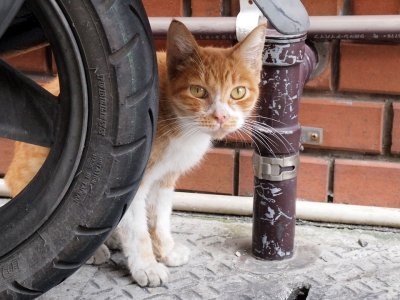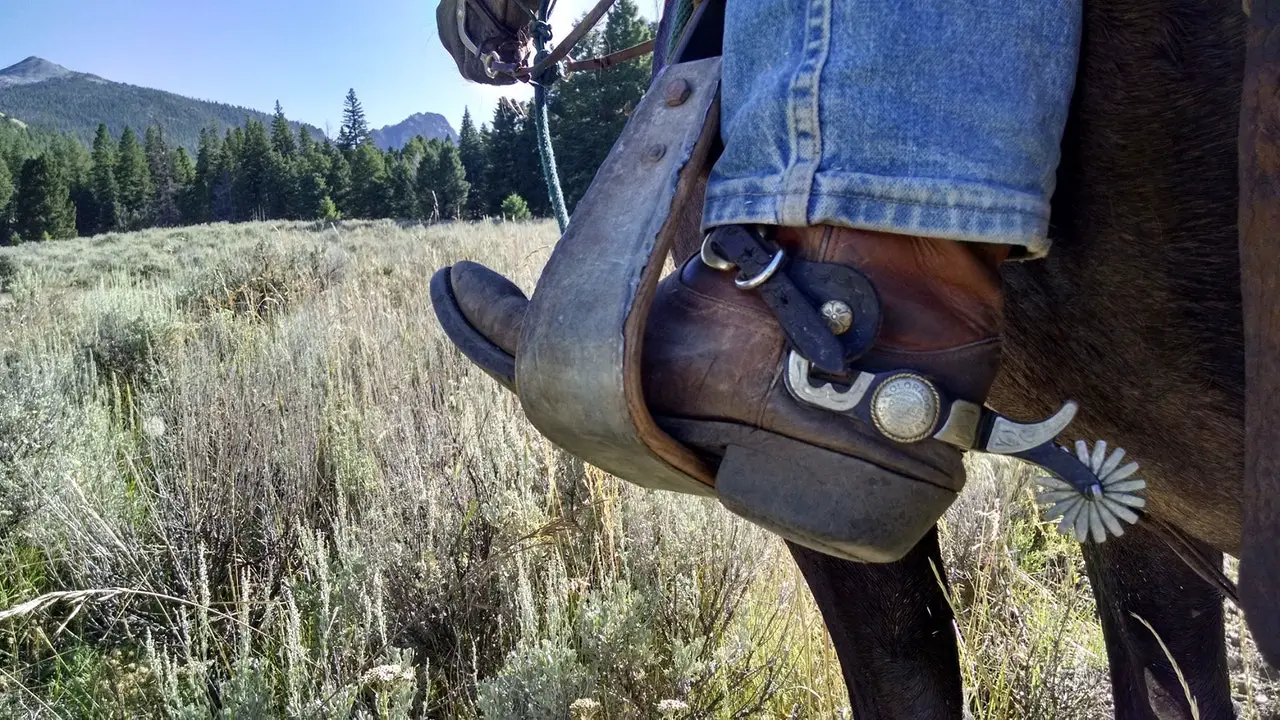Cat Aggression: How to Encourage a Friendlier Home
 Cat Aggression: How to Encourage a Friendlier Home
thegearhunt.com
Cat Aggression: How to Encourage a Friendlier Home
thegearhunt.com
While we all love our feline companions, there are times when they can become aggressive, not only to other animals in the home but family members and friends as well. It is true that cats are basically independent creatures that have personalities of their very own. If your cat is suddenly biting and scratching you, your friends, and anyone else that comes into your home, it’s important to note that cats don’t just suddenly become aggressive for no reason, especially if they were human-friendly before. There are many reasons out there that a cat can become aggressive and we will go into those in this blog.
 Of course, no one wants to have to get rid of the feline they adore, but you can’t let one cat terrorize a whole household. It is important to remember that a certain amount of aggression from a cat is normal, as cats use scratching and even biting as a way to talk to other cats, whether they are playing or telling them to back off for whatever reason. Certain amounts of aggression are normal when it comes to cats and humans as well since they tend to bite or scratch to get their point across, and are known to play too roughly because, in reality, cats don’t really know how to play. It is possible, however, for you to teach your cat appropriate ways to play so that they don’t hurt others. In this blog, however, we want to concentrate on the reasons that a cat becomes aggressive and how you can fix the problem, without having to give away your cat.
Of course, no one wants to have to get rid of the feline they adore, but you can’t let one cat terrorize a whole household. It is important to remember that a certain amount of aggression from a cat is normal, as cats use scratching and even biting as a way to talk to other cats, whether they are playing or telling them to back off for whatever reason. Certain amounts of aggression are normal when it comes to cats and humans as well since they tend to bite or scratch to get their point across, and are known to play too roughly because, in reality, cats don’t really know how to play. It is possible, however, for you to teach your cat appropriate ways to play so that they don’t hurt others. In this blog, however, we want to concentrate on the reasons that a cat becomes aggressive and how you can fix the problem, without having to give away your cat.
So, are you having problems with your cat attacking your other pets or biting and scratching you, your family, and your friends? Then, this blog is for you. Put down the band-aids and peroxide, cuddle your cat, and let’s delve further into cat aggression and how to encourage a friendlier home, and still be able to live with your feline pal.
Common Reasons for Cat Aggression
Even if you are the most experienced of pet owners, being faced with a cat that is hissing, spitting, screaming, and possibly clawing and biting at you, can put fear in your heart. The last thing anyone wants is to be attacked by a furball of teeth and nails. The thing to remember is that cats don’t just go crazy. There is always a reason and there are always warning signs. With that in mind, let’s go into a few of those reasons below.
When They Are in Pain
If your cat is in pain, it will usually respond with hissing and swatting out at whoever or whatever is causing that pain. For example, if you step on your cat’s tail or it gets caught in the door, then the cat is going to strike out at whatever it thinks is hurting it. This is especially true for cats that have been abused in the past.
Aggression Can be the Result of Fear
Anyone who is an experienced cat owner can tell when a cat is scared. They usually flatten their ears, their eyes get wide, and their fur stands up. They also arch their backs in preparation to attack if the need arises. Cats will also turn sideways, puff up their tails and hiss a warning that whatever they feel is a threat needs to back off. Trying to approach a cat that is scared is not a smart thing to do. It’s best to leave the cat alone because it will get aggressive.

Aggression Due to Stress
Most cats are pretty laid back creatures, but they are also solitary creatures that like to be left alone. Living in a home where there is constant fighting and tension, can cause an already stressed cat to lash out and become aggressive to everything and everyone around him. A home that has too many other cats can cause a cat to act out as well.
Chemical Imbalances Can Cause Aggression
While this is the rarest reason for cat aggression, chemical imbalances have caused it to happen. However, just like some humans, some cats have imbalances that cause them to be irritable and aggressive. In this case, you need to talk to your vet, so he can prescribe your cat something that will get him back on track.
While these are only a few of the reasons that your cat might be acting out, there are always going to be warning signs. No cat should suddenly start attacking people and other pets out of nowhere. If you can’t seem to get your cat to become the sweetheart it once was, there are specialists who deal with this type of thing. Below, we will go into some of the top tips out there for dealing with an aggressive cat, to help you get your home back.
Tips for Dealing with an Aggressive Cat in Your Home
There isn’t much worse than being afraid of your own cat, in your own home. Below we will go into some tips that will hopefully bring you peace and your cat peace as well.
 Know the Warning Signs
Know the Warning Signs
The first thing you need to learn, and to teach your family and friends, is the warning signs that your cat is about to attack. Those signs are listed below.
- His tail is twitching back and forth
- Ears are pointed down and flat against his head
- His eyes are suddenly dilated and wide
- His purrs are becoming low growls, which by the way are telling you to back off
- The skin on his back ripples
Any of these or a combination of these is a signal that a cat is angry or afraid. Whichever one it is, could end in someone getting scratched or bitten, if you don’t leave him alone.
Retrain Your Feline Bully
It’s important to remember, that as long as a bite works for your feline bully, then that is the behavior you can expect him to continue. The trick to stopping this is making sure to avoid the situations that prompt him to bite. It’s still important to practice “tough kitty love,” and be consistent with not rewarding bad behavior from your cat. Experts call a behavior or bad habit that gets worse right before it gets better with cats an “extinction burst,” so if you experience this with your cat it is normal.
 Identify Your Pets Petting Threshold
Identify Your Pets Petting Threshold
If you have ever noticed one cat will groom another cat by licking their neck and head. If you are trying to get your cat to be lovable and allow you to pet him, you need to stick to petting the neck and head, as oftentimes full body pets can result in the cat becoming aggressive and biting you. Once you are allowed to pet his neck and head, you need to determine what his petting threshold is. This is the number of times he allows you to pet him before he becomes aggressive.
Do this by counting the number of times you get to pet him before he gets antsy. Every cat is different, so this could be three, four, or five times. Once you know his threshold, don’t pet him over that threshold. Instead, stand up and dump him gently off your lap, so he can go on his way. Never, pick him up and put him off your lap, because he could grab at your hands. In this way, you are able to start training him to be petted, but stay in complete control of the situation and avoid being bitten as well.
Teach him that Rewards Need to be Earned
It’s important to let your cat know that you are the one in charge and that rewards, such as playtime, food, attention, and affection need to be earned. They aren’t just given out for bad behaviors. One way to do this is by using feeding time as a training tool. Instead, of just feeding your cat at the specified time, try telling him to “Come,” so that he learns to associate that command with feeding time. Call him, then shake the bag, the jar of treats, or run the can opener to alert him. When he comes at your command, then you can pay him, by giving him his bowl of food.
Bribes for the Kitty Are Surely Allowed
Any cat owner is not above using a toy or treat to bribe their kitty into doing what they want. This is a good idea, especially for pet parents who have a cat that is aggressive. Instead of lifting or pushing your cat off the furniture or out of your way, which could result in a bite or being scratched, toss the toy or treat on the floor and say move so that they will go after the treat or toy. If that doesn’t work, use the earthquake technique, which is rocking the chair they are in, back and forth, until they get down. This should train them to respond to the word move and prevent you from being bitten at the same time.
If you are looking to turn your aggressive kitten into a lap kitty, there are a few rules to follow in order to make that happen as well. Those are listed below for your perusal.
Always Remain Calm
Anyone who has owned a cat before can tell you that they feel threatened by sudden movements and aggressive acts. If you are trying to get your new kitten to be a lap cat, you need to move around him slowly, so as not to startle him, or he’s going to bolt or may even attack you.
Don’t Stare Your Cat Down
Evidently in the cat world, staring is a rude thing to do, so you don’t want to stare your cat down. Your kitten is not going to interact with you if you do. Instead, try blinking at him slowly and it’s possible, you will get a blink back. Think of it as sort of a cat kiss, without him having to be petted or touched.
Rub the Right Way
Many cats feel like they are vulnerable if you try to rub their bellies and oftentimes that will end in you getting bitten or scratched. Stroking them on the head, neck, or in that spot just between their eyes is something that will make them happy and make you their new best friend. It’s best to avoid your kittens tail as well since they don’t like that being petted either.
Bond Through Your Grooming
Cats love to groom themselves and they love for other cats to groom them, so why not try to bond through grooming your cat yourself. If you try this method, make sure to groom your pet using long, even strokes with the brush and never brush the wrong way. Talking to him as you brush with long, gentle strokes, in a calm, soothing voice, can do a lot to help with your bonding experience. You also need to watch for signs that your cat is tired of being groomed. If he gets up and walks away, don’t try to stop him and if his tail starts twitching back and forth, that means he’s had enough and you need to leave him alone.
Bribery Works for this Too
Once again, as stated above, cat owners aren’t above a little bit of bribery. If you want your aggressive cat to become a lap cat that snuggles with you when you watch TV, then a little bit of bribery can go a long way. Whenever your feline pal is loving or settles into your lap to cuddle, reward him with the treats you keep in your pocket for just such an occasion.
These are just a few of the ways that you can encourage a friendlier home when you have an aggressive cat. By following these tips, you will be friends with your cat again in no time at all.
Sources
- The Spruce Pets: How to Fix Cats’ Petting Aggression
- Vetstreet: 5 Ways to Turn Your Kitty into a Lap Cat
- Catster: Dealing with an Aggressive Cat? 7 Reasons Cats Become Aggressive















